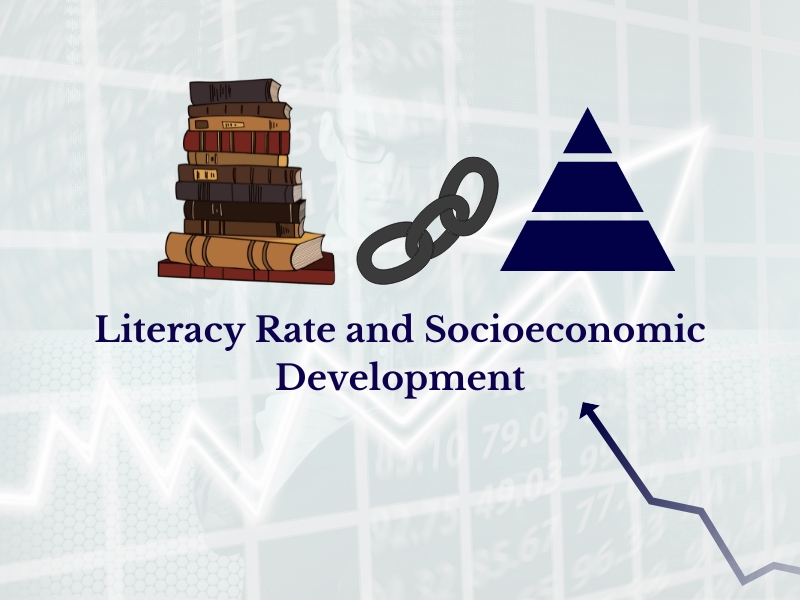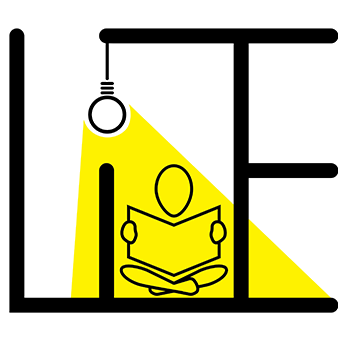In the complex mosaic of societal advancement, the literacy rate stands as a pivotal strand intricately woven into the fabric of socioeconomic development. This correlation extends beyond statistical figures; it epitomizes the transformative power of knowledge. More than basic proficiency in reading and writing, literacy embodies a gateway to empowerment, a catalyst for heightened awareness, and a vehicle for enhancing the overall quality of life. Delving into the unique context of India, this article ventures to unravel the multifaceted relationship between literacy rates and socioeconomic progress. As we traverse through different geographic regions within the nation, we uncover a nuanced interplay that not only underscores the challenges faced but also illuminates the promising avenues for growth and change. From the intricate web of literacy’s impact on economic vitality to the disparities stemming from cultural norms and geographic divides, this exploration navigates the terrain where literacy, development, and the promise of a brighter future converge.
Understanding the Dynamics
Gauging a nation’s educational progress, the literacy rate functions as a compass navigating the realm of knowledge dissemination. This metric aptly mirrors a country’s capacity to equip its populace with the tools of learning. India, a diverse and intricate landscape, provides a fascinating canvas on which the intricate relationship between literacy and socioeconomic development is painted. As we venture into its various geographies, we unravel a captivating narrative that unveils the intricate connection between literacy rates and the multifaceted facets of progress and prosperity. The exploration delves into the profound impact of education on socioeconomic well-being, unearths the nuanced challenges faced by different regions, and seeks to illuminate the pathways that lead to a future where literacy fuels holistic development.
The North-South Divide
A notable divergence comes to the fore when comparing the northern and southern swathes of India. In this geographical juxtaposition, the southern states—Kerala, Karnataka, and Tamil Nadu—stand as beacons of elevated literacy rates. This phenomenon finds its roots in a confluence of factors, notably enhanced access to education, well-rounded healthcare systems, and robust economic avenues. The disparity between these regions illuminates the symbiotic relationship between multifaceted development and literacy rates. These southern states serve as living examples of how a holistic approach to advancement, spanning various sectors, can pave the way for elevated literacy rates, ultimately enhancing the overall quality of life and socioeconomic prosperity.
Urban vs. Rural Disparities
A clear dichotomy emerges when examining the disparities between urban and rural landscapes. Urban areas, with their heightened accessibility to educational institutions, technological resources, and diverse opportunities, tend to boast elevated literacy rates. Conversely, rural settings contend with a distinct set of challenges, including insufficient infrastructure, economic constraints, and restricted access to quality education. These factors collectively contribute to lower literacy rates in rural regions. This dichotomy underscores the pivotal role of equitable access to education, resources, and development initiatives in narrowing the urban-rural literacy gap, which in turn contributes to more balanced socioeconomic growth and societal advancement.
Economic Growth and Literacy
The intricate interplay between literacy and economic growth underscores a mutually beneficial relationship. While high literacy rates are undoubtedly an outcome of economic advancement, they simultaneously act as a powerful catalyst for ongoing development. Literate individuals are armed with the skills and knowledge necessary to actively engage in the workforce, effectively contributing to economic prosperity. Their ability to access and interpret information, communicate effectively, and adapt to changing circumstances positions them as valuable assets in a rapidly evolving economic landscape. This virtuous cycle perpetuates as economic growth, in turn, opens doors to enhanced educational opportunities, thereby further elevating literacy rates and perpetuating socioeconomic progress.
Development Aid and Literacy
The synergy between development aid and literacy is evident as initiatives targeting infrastructure, healthcare, and livelihood prospects wield considerable influence over literacy rates. By investing in education, vocational training, and healthcare facilities, a positive feedback loop is established. Elevated literacy rates not only empower individuals to access better opportunities but also foster an environment conducive to sustained development. Equipped with enhanced skills and knowledge, literate individuals contribute more effectively to their communities and economies, thereby bolstering overall progress. This interconnected relationship underlines the critical role of targeted development aid in breaking down barriers to education and literacy, ultimately catalyzing comprehensive societal advancement.
Cultural and Gender Dimensions
Cultural norms and gender dynamics exert a significant impact on literacy rates. In certain societies, entrenched cultural beliefs might discourage girls from pursuing education, perpetuating gender disparities in literacy. Acknowledging and tackling these challenges is paramount in the journey towards achieving balanced and fair literacy rates. Breaking down gender-related barriers, fostering inclusive educational environments, and advocating for gender equality are pivotal measures to ensure that both men and women have equal access to education, ultimately leading to higher overall literacy rates and contributing to societal growth and transformation.
Challenges in Underdeveloped Areas
Underdeveloped areas characterized by poverty, inadequate infrastructure, and restricted access to essential services grapple with the intricate challenge of low literacy rates compounded by a lack of avenues for socioeconomic advancement. These regions often find themselves caught in a cycle where limited educational opportunities hinder overall development, while the absence of development perpetuates low literacy rates. Addressing this issue requires targeted interventions that encompass comprehensive approaches, from enhancing educational infrastructure and providing skill-based training to improving access to healthcare and livelihood opportunities. Such concerted efforts have the potential to break the cycle of underdevelopment and illiteracy, fostering positive and sustainable transformations within these marginalized communities.
Empowering through Education
Empowering individuals through education is a vital strategy to bridge the existing literacy gap, particularly in marginalized communities that are disproportionately affected. To achieve this, a collaborative approach involving governments, non-governmental organizations (NGOs), and local communities is essential. By pooling resources and expertise, these entities can design and implement comprehensive education programs that cater to the unique needs of different regions. These efforts encompass not only formal schooling but also emphasize the importance of lifelong learning. Through accessible and quality education initiatives, individuals are equipped with the tools to break free from the cycle of illiteracy, empowering them to lead more informed, productive, and fulfilling lives.
Conclusion
In conclusion, the interplay between literacy rates and socioeconomic development across India’s varied landscapes paints a nuanced picture of progress. This intricate relationship underscores the fact that literacy is not only a reflection of development but also a catalyst for it. It is a reciprocal process where higher literacy rates foster enhanced development opportunities and comprehensive development initiatives in turn uplift literacy rates. The path to a more equitable and prosperous nation lies in addressing regional disparities, bolstering educational infrastructure, and nurturing a culture of continuous learning. By placing education at the heart of its developmental journey, India can forge a brighter future, characterized by improved literacy rates, empowered communities, and a more inclusive society. The pursuit of literacy is a transformative endeavour that transcends barriers, fuels progress, and paves the way for a more enlightened and empowered nation.

